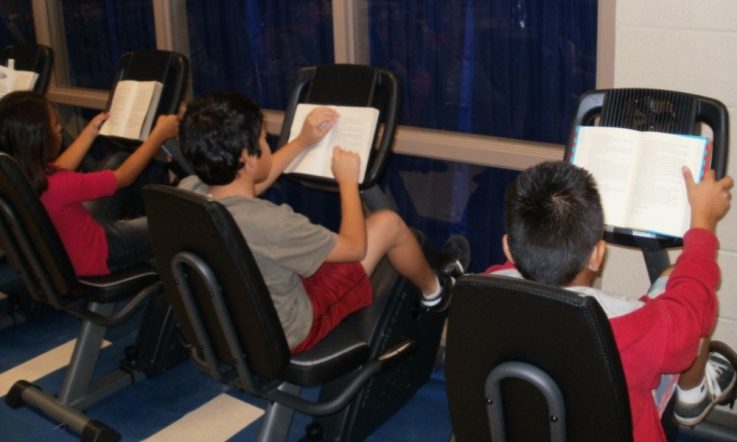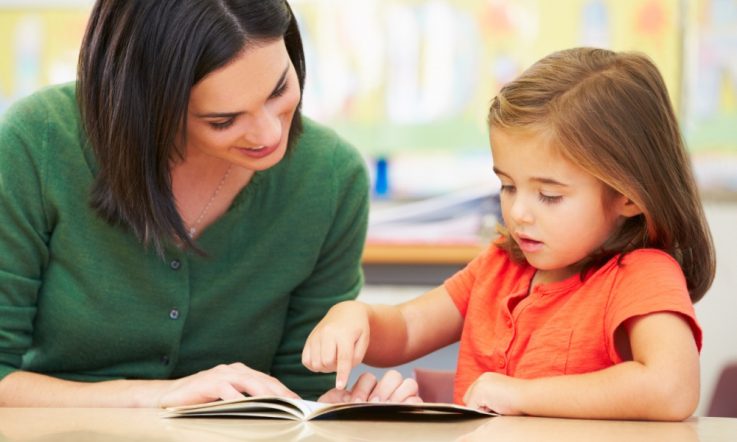Research has shown that reading for enjoyment has an impact on academic achievement.
One of the ways teachers can encourage students to read for pleasure is by reading aloud to them, but it is a practice more associated with primary rather than secondary school settings.
That's not the case in Anne Wilson's class. The Tasmanian educator has been teaching for 36 years, and has always read aloud for enjoyment to her Grade 7 to 12 students. ‘It's something I've done from day one.'
Wilson, who is currently in an education department Literacy Specialist role at Cosgrove High School, says that may be down to having good role models as a youngster.
‘I was fortunate to have a Grade 6 teacher who every Friday afternoon would read us a story for enjoyment. He would read with expression, he would even manage to do a few different voices for the characters.
‘I remember even students who didn't seem to enjoy English seemed to enjoy listening to these stories. I found when I had my own classes and was working in high schools on a full-time teaching load, I would probably read to my students for pleasure at least three times per week.'
She chooses a variety of text types and lengths – from short stories, picture books and poetry to novels, autobiographies and historical diaries – sometimes reading a complete book over a period of time or just an extract, opening chapter, or description of a character or setting.
‘By reading both fiction and non-fiction texts students are reassured that you value both.
‘I recall saying to my students with Liar [a novel for young adults] “I can't tell you why because it would be a plot spoiler, but I was really angry when I finished this book”. I then read the opening chapter to them. Later that day, the librarian laughed and said: “You should have warned me. All your students want to borrow Liar and I only have one copy in the library”.'
She also likes to read student writing. 'When I was taking Creative Writing I would ask if it was okay to read it to the class. Then, after a while, they would come to me and ask if I could read it. We'd just read their work and enjoy it. Sometimes the students would just spontaneously clap … so it's just developing that whole culture and just instilling that love of reading.'
A recent Teacher article, The power of a good book highlighted at a study involving schools in Western Australia where none of the students could recall a high school teacher having read aloud to them without it being connected to a learning task or expectation (Merga, 2015).
Wilson knows many secondary teachers who read aloud to students for pure enjoyment, but says potential barriers for others could include time pressures, a busy curriculum and possibly a lack of modelling in the teacher's own life.
When reading aloud for pleasure, Wilson prefers students not to have the text in front of them. ‘Students in high school who have always had the text in front of them initially find it hard not to be able to follow along, but they come to really enjoy it. They also appreciate being able to listen to a text that they are not expected to analyse or write about. Interestingly, they will sometimes initiate an informal discussion after the reading.'
Wilson also includes time for independent reading in lessons and lets students borrow her books. ‘Sometimes they circulate and I lose track of them, but I think that is better than them sitting on my bookshelf gathering dust.'
References
Merga, M.K. (2015). "She knows what I like": Student-generated best-practice statements for encouraging recreational book reading in adolescents. Australian Journal of Education. 59(1).
Do you read aloud to your students purely for enjoyment?
Are you reading a range of text types?
Do you discuss your own reading preferences, experiences and recommendations with students?
National Simultaneous Storytime, an annual event held by the Australian Library and Information Association, is on 27 May this year. Visit https://www.alia.org.au/nss for more information.



